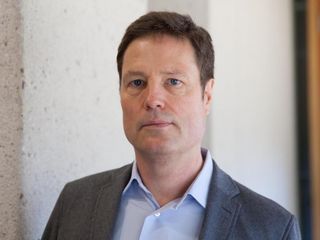
Carl Zimmer in Quanta:
If you want to understand why evolutionary biologist have been so loathe to make predictions, read “Wonderful Life,” a 1989 book by the late paleontologist Stephen Jay Gould.
The book is ostensibly about the Cambrian explosion, a flurry of evolutionary innovation that took place more than 500 million years ago. The oldest known fossils of many of today’s major animal groups date to that time. Our own lineage, the vertebrates, first made an appearance in the Cambrian explosion, for example.
But Gould had a deeper question in mind as he wrote his book. If you knew everything about life on Earth half a billion years ago, could you predict that humans would eventually evolve?
Gould thought not. He even doubted that scientists could safely predict that any vertebrates would still be on the planet today. How could they, he argued, when life is constantly buffeted by random evolutionary gusts? Natural selection depends on unpredictable mutations, and once a species emerges, its fate can be influenced by all sorts of forces, from viral outbreaks to continental drift, volcanic eruptions and asteroid impacts. Our continued existence, Gould wrote, is the result of a thousand happy accidents.
To illustrate his argument, Gould had his readers imagine an experiment he called “replaying life’s tape.” “You press the rewind button and, making sure you thoroughly erase everything that actually happened, go back to any time and place in the past,” he wrote. “Then let the tape run again and see if the repetition looks at all like the original.” Gould wagered that it wouldn’t.
Although Gould only offered it as a thought experiment, the notion of replaying the tape of life has endured. That’s because nature sometimes runs experiments that capture the spirit of his proposal.
For an experiment to be predictable, it has to be repeatable. If the initial conditions are the same, the final conditions should also be the same. For example, a marble placed at the edge of a bowl and released will end up at the bottom of the bowl no matter how many times the action is repeated.'
Biologists have found cases in which evolution has, in effect, run the same experiment several times over. And in some cases the results of those natural experiments have turned out very similar each time. In other words, evolution has been predictable.
More here.
